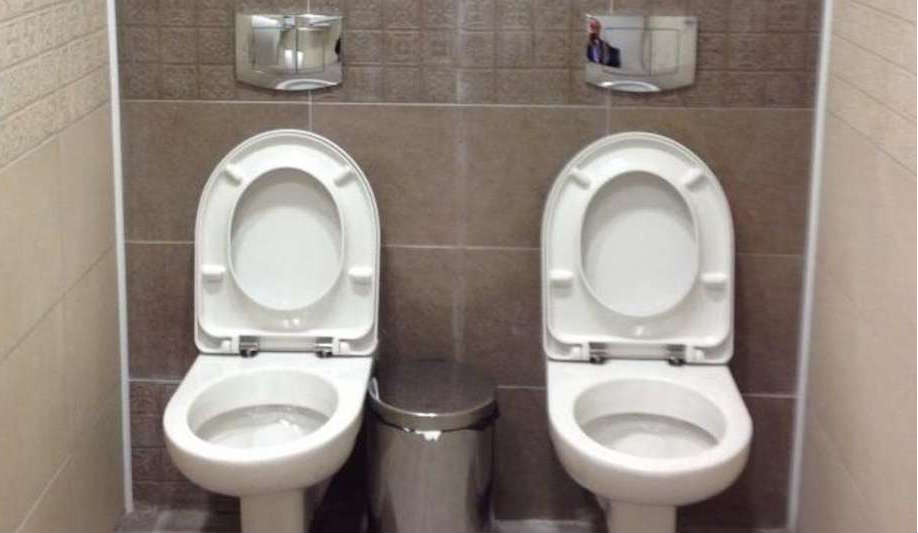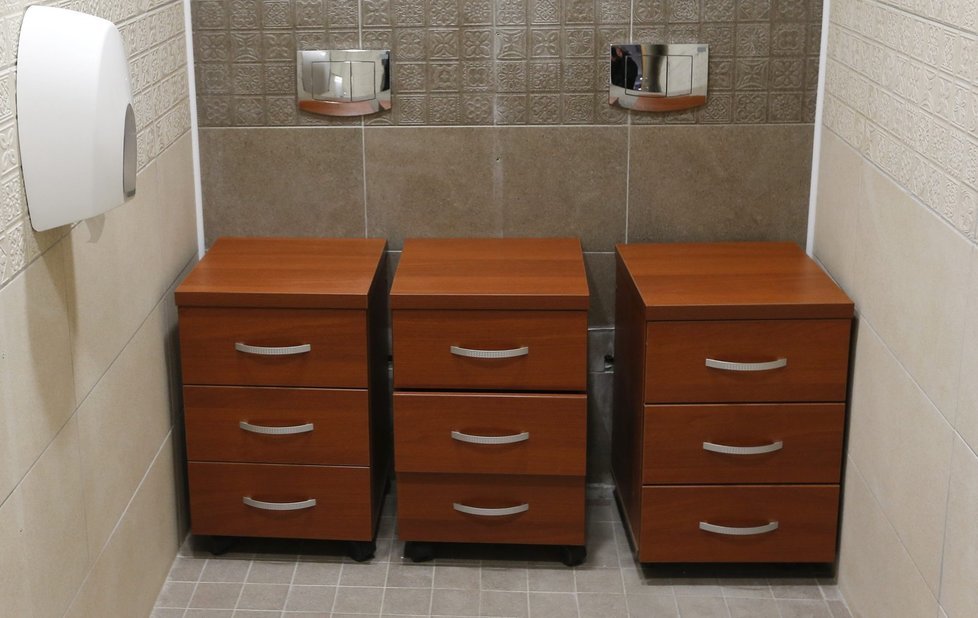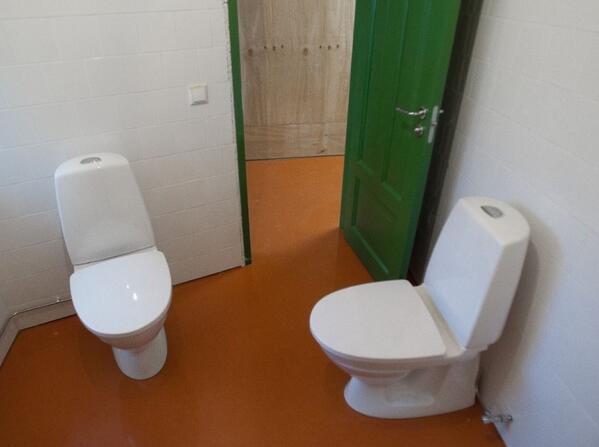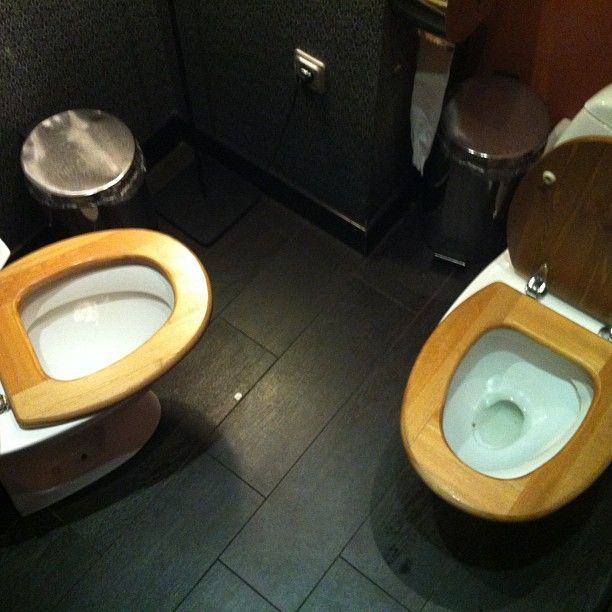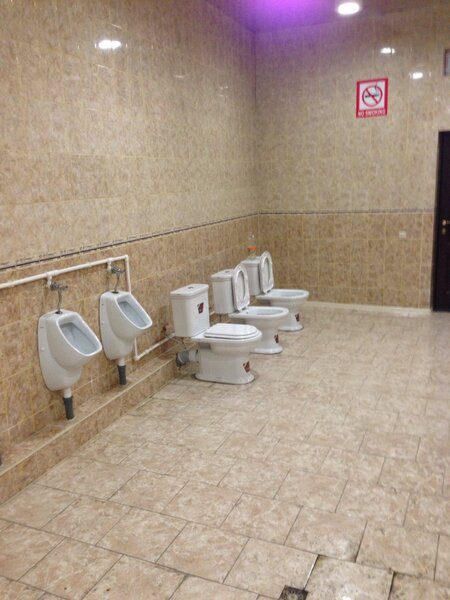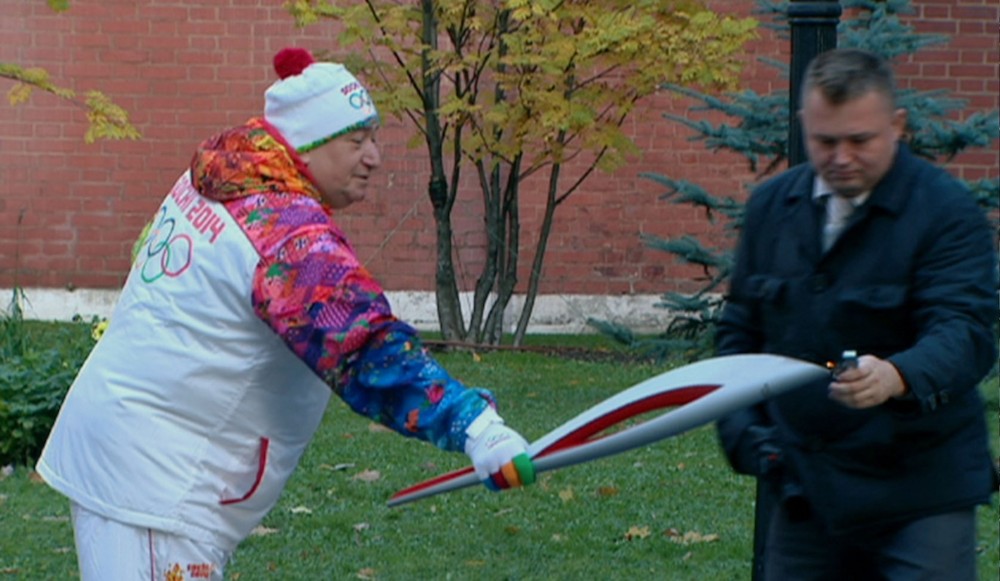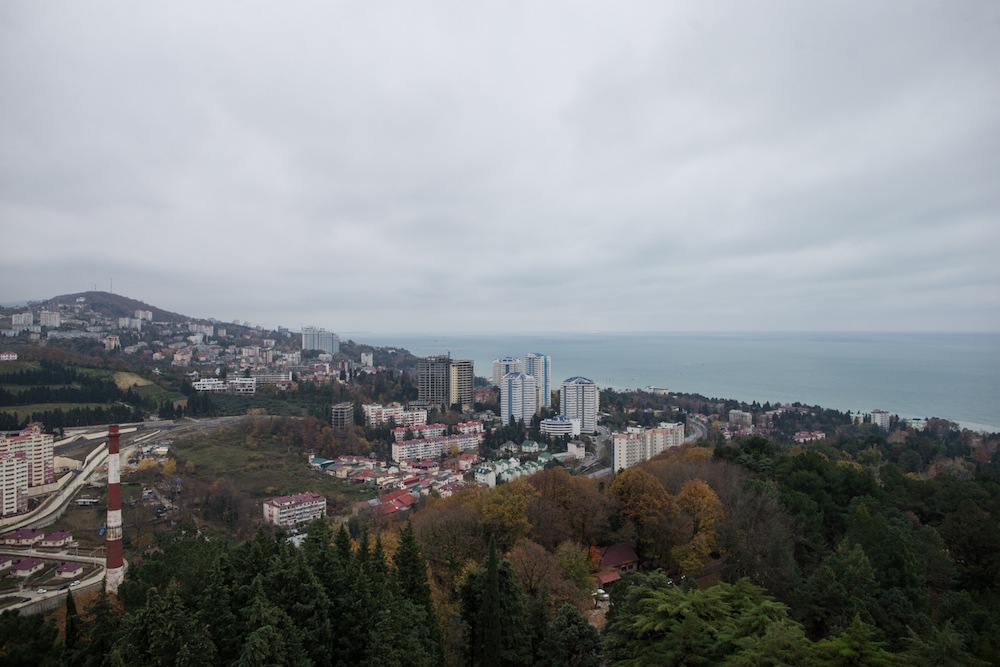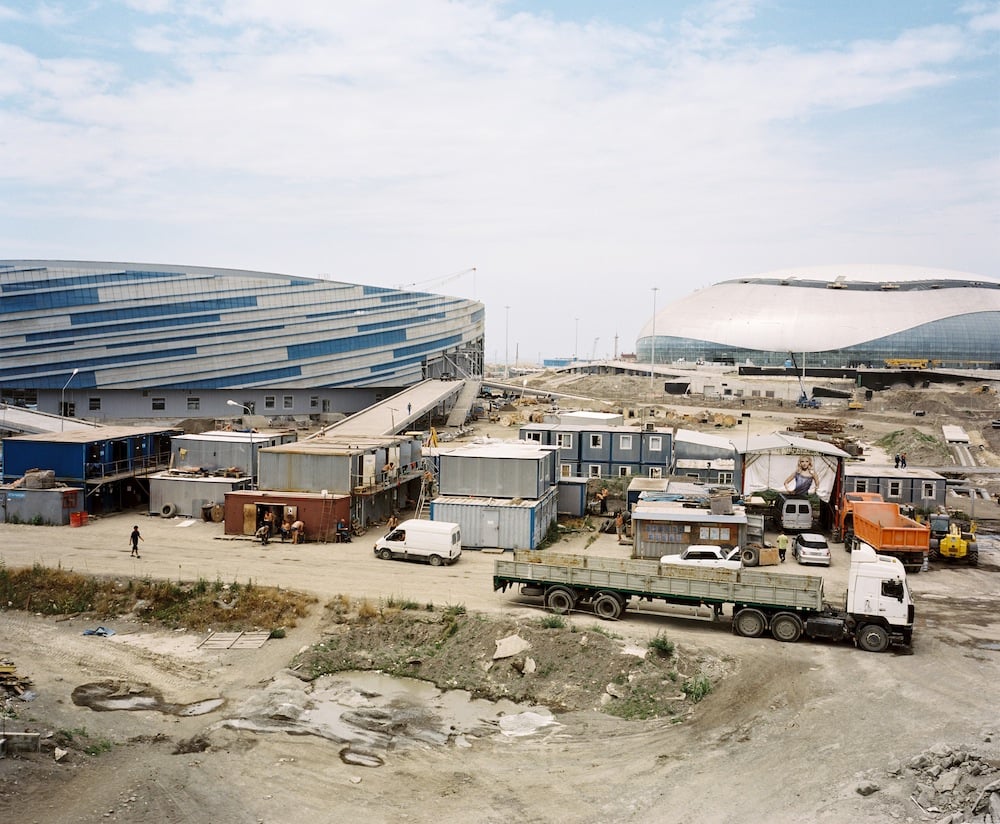Seeing double: four answers to the mystery of Sochi’s twin toilets

The internet has been awash with stories and photos of Sochi’s twin toilets. But just why were two toilets built side by side? Maryam Omidi goes in search of an explanation
There’s no shortage of amusing stories about the Sochi Winter Olympics. In the run-up to the Games, journalists in the city have shared photos of their half-built hotels, of stray dogs inhabiting their rooms and of the pee-coloured, potentially toxic, water in their bathrooms.
Appetite for these stories is testament to a popular love for pre-Olympic tales of disaster (the @SochiProblems Twitter account has already got more than 60,000 followers), as well as a fixation with “keraaazy Russia”, a phenomenon expounded upon in The Calvert Journal here.
The story that has stolen the limelight is that of the twin toilets, discovered in a men’s bathroom at the Biathlon Centre by BBC journalist Steve Rosenberg. Russian journalist Nikita Likhachev promptly followed up with photos of other bathrooms in Russia with even stranger configurations: toilets facing each other, toilets at right angles to each other, and a row of toilets next to a row of urinals.
Determined to get to the bottom of the mystery of the communal toilets, The Calvert Journal has been searching for an explanation.
The bad timing explanation
On her Facebook page, Elena Greenberg, a member of the Olympic Committee’s press service, said that Rosenberg had stumbled upon the toilet mid-way through its transformation into a utility room.
The incompetence explanation
“I suppose in some places twin toilets are just misplaced or placed together because of bad room planning and a low budget,” says Russian journalist Nikita Likhachev. “Due to low funds and a total ignorance of design and sense of beauty.”
The ideological explanation
According to Slovenian philosopher Slavoj Zizek, the toilet is a rich ideological zone. Traditional German toilets, which come equipped with a platform where excrement awaits examination, capture the national attitude of “reflective thoroughness”. Squat loos in France ensure stools disappear without delay like a guillotine, signalling the nation’s love for revolution. Finally, Anglo-Saxon lavatories fall somewhere in between: the basin is full of water so that faeces float visibly before gradually disappearing, a design function related to English pragmatism. So if Zizek is right the answer lies in a country’s national character.

The semiotic explanation
The twin toilets speak of a broader set of bathroom dos and dont’s, as per this notice tweeted by Canadian snowboarder Sebastien Toutant on 1 February. But while a ban on vomiting, squatting on the seat or urinating standing up is just about comprehensible, what does a symbol banning fishing in toilets mean? That’s another toilet mystery to be solved.
